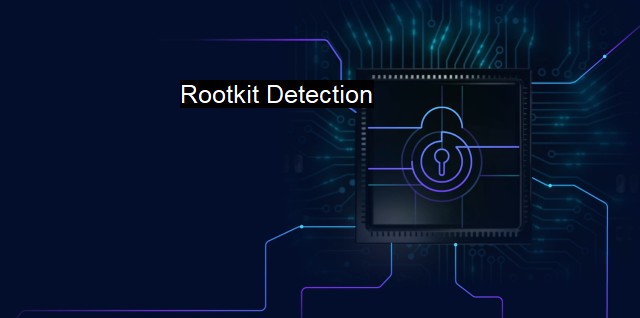What is Rootkit Detection?
Detecting Rootkits: A Crucial Aspect of Cybersecurity and Antivirus Software for Enhanced Protection Against Malicious Attacks
Rootkit detection refers to the processes and methods deployed to scan, identify, and wipe out rootkits from computer systems. It's imperative as it aids in safeguarding computers and networks from cyber threats.Rootkits are a kind of malicious software (malware) that grant unauthorized users or hackers privileged access and control over a computer system without being detected. They embed themselves deep in the system, sometimes in the system kernel, to gain complete control, often going as far as changing system frameworks and utilities to keep themselves hidden.
The term "rootkit" is derived from “root” which is a term for administrative level privileges on a system, and the word "kit" which refers to the tools or software that facilitate the hacking process. This encapsulates the gravity of a rootkit infection. Once a rootkit is embedded in a system, it can potentially manipulate what the system recognizes as threats, making them virtually invisible to basic antivirus software programs.
Rootkit detection in cybersecurity revolves around several techniques and strategies. The simplest form is signature-based detection. This method applies in identifying known rootkits by comparing a system's activities with a database of known rootkit signatures. These signatures are optical representations or patterns that act as fingerprints, classifying rootkits into families.
Secondly, hash verification also plays a critical role in rootkit detection. The idea centers on the belief that any slight change in a file or system's properties causes a drastic difference in its hashing output. Therefore, by comparing the hashes of system files and configurations against known 'good' hashes, any change that would indicate the presence of a rootkit can be identified.
Another method used in rootkit detection is behavioral analysis. It involuntarily monitors the actions and behaviors of system applications and processes. If these anomalies in behavior line up with those of known rootkit exploits, the system flags it as a rootkit infection.
In addition to these, heuristic checks are often performed daily to ensure high-level security. Instead of focusing on known signatures, they revolve around studying the behavioral tendencies of rootkits and identifying if any suspicious software corresponds with these tendencies.
Cross-View based techniques also aid in rootkit detection. They draw comparisons between broad-level views such as an operating system's high-level application programming interface, and a more detailed view through direct hardware or memory scans. Incoherencies between these various views may indicate the presence of a rootkit.
Given the progressive nature of malware technologies, the field of rootkit detection continually needs adaptation and upgrading to level up with the ever-advancing malware techniques. This is imperative because of the critical nature of rootkits, as they hide within trusted processes and can give hackers complete control of one's computer systems and unfiltered access to personal or business data.
It should be noted that while antivirus software can sometimes detect and remove known rootkits, more advanced techniques, like the ones outlined above, may be necessary at times of complex infections. Users must, therefore, be made aware of using reliable sources, practicing safe browsing and regular system updates as part of their general cyber hygiene etiquette.
To cap it off, rootkit detection is not merely a buzz phrase but a critical practice in the world of information technology worthy of investing resources and time to master. Its importance is underpinned by the need to scrutinize every base and blind spot in the computer universe for stowaway rootkits traversing the digital corridors either to inflict harm, pilfer data, or others.

Rootkit Detection FAQs
What is a rootkit?
A rootkit is a type of malicious software that can hide its presence and other malicious activity on a device. It is designed to give an attacker access to a computer or network without being detected.Why is rootkit detection important in cybersecurity?
Rootkit detection is important in cybersecurity because rootkits can be used to gain access to sensitive information, steal data, or disrupt normal operation of a device or network. Detecting and removing rootkits can prevent these types of attacks and protect against future security breaches.What are some common methods used for rootkit detection?
Some common methods used for rootkit detection include using antivirus software, performing system scans for suspicious activity, monitoring system logs for unusual behavior, and using specialized rootkit detection tools.How can I protect my device against rootkit attacks?
To protect your device against rootkit attacks, it is recommended to use antivirus software, keep your system and software up-to-date with the latest security patches, use strong passwords, and avoid clicking on suspicious links or opening suspicious email attachments. Regularly scanning your system for viruses and malware can also help detect and remove any potential rootkits before they cause damage.| | A | | | B | | | C | | | D | | | E | | | F | | | G | | | H | | | I | | | J | | | K | | | L | | | M | |
| | N | | | O | | | P | | | Q | | | R | | | S | | | T | | | U | | | V | | | W | | | X | | | Y | | | Z | |
| | 1 | | | 2 | | | 3 | | | 4 | | | 7 | | | 8 | | |||||||